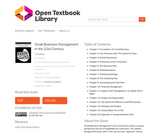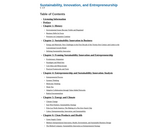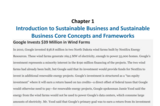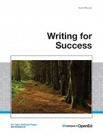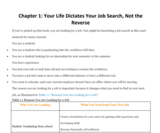
This book is a practical discussion of actionable steps (six of them!) that students can take to land a job regardless of the market. Whether the estimate is 25% unemployment or single-digit unemployment, that number doesn’t apply to any one student. For any individual, the unemployment rate is 0% or 100%. One either has a job or doesn't. When any one person is looking for a job and there is 10% unemployment, that person just wants to be one of the nine people that has a job.
Students might think even that one job is beyond their grasp. They think they don’t have the right degree. Their school is in a different location than where they’d like to work. Not enough jobs are listed or employers are visiting the campus. This type of thinking cedes control of a student's search to outside forces. It is not up to professors, schools, career services support, or recruiters to get students a job. This book is about the proactive things that students can do to get themselves a job.
In the first chapter, Six Steps to Job Search Success covers the different types of job searches: full-time job after graduation, internship, return to workforce, career change, relocation. The rest of the book is about how, regardless of the type of job search or overall market, one can be proactive and successfully land a job. This textbook outlines a structured approach, actionable steps, and stresses the importance of a student's willingness to see this through.
Six Steps to Job Search Success provides that structure with six steps anyone can take to: 1. identify the types of jobs they’d like (Step 1: Identify Your Target) 2. position themselves for these jobs (Step 2: Create A Powerful Marketing Campaign) 3. figure out what employers are looking for (Step 3: Research) 4. develop relationships with prospective employers (Step 4: Network and Interview) 5. stay connected throughout the decision-making process and fix any problems that might arise (Step 5: Stay Motivated; Organized and Troubleshoot Your Search) 6. complete their search (Step 6: Negotiate and Close the Offer).
Connie and Caroline are both former recruiters with over 40 years of combined hiring experience between them. Connie led recruiting areas for three Fortune 500 companies, and Caroline led recruiting in-house for a Fortune 500 but also as an external recruiter for established firms and start-ups. They’ve hired thousands of people from interns to senior executives. They developed the process detailed in Six Steps to Job Search Success based on how hiring works.
The authors explain that in reality, the ability to look for a job and land a job is a separate and distinct skill than any of the skills required for the job itself. The goal of their book is share their job search techniques with your students so that your students can take control of their job search, add an exceptional new job to their career and enjoy the life rewards a satisfying career can bring. If you are interested in a practical approach that can deliver results, this book is for you and your course. Order a desk copy today and see for yourself.
- Subject:
- Business and Communication
- Material Type:
- Textbook
- Provider:
- The Saylor Foundation
- Provider Set:
- Saylor Textbooks
- Author:
- Carole Ceniza-Levine
- Connie Thanasoulis-Cerrachio
- Date Added:
- 01/01/2011
